Description
Item Details
This Celtic Warrior Trinity knot Necklace comes in Gold and Silver set with a choice of Diamonds and Gemstones. The current selection is made from . Set with Synthetic Diamonds . Height (excl bail) 26 mm. Width 25 mm.
Individually handcrafted in Ireland. Guaranteed Quality.
The design is inspired by one of the finest known works of Celtic art, thought to have been owned by a high status Celtic Warrior King, the “Ardagh Chalice” made in the 9th century AD.
The Trinity Knot is the most well-known Celtic design. It represents eternity and continuity. The three knots can represent the past, present and future of the relationship.
Celtic Designs have been around since ancient times and have long been applied to create fine art. Their distinctive patterns have appeared on stone, metalwork, in jewellery and on magnificent illuminated manuscripts. This beautifully crafted piece is a fine example of the exquisite work of the celts handed down from generation to generation.
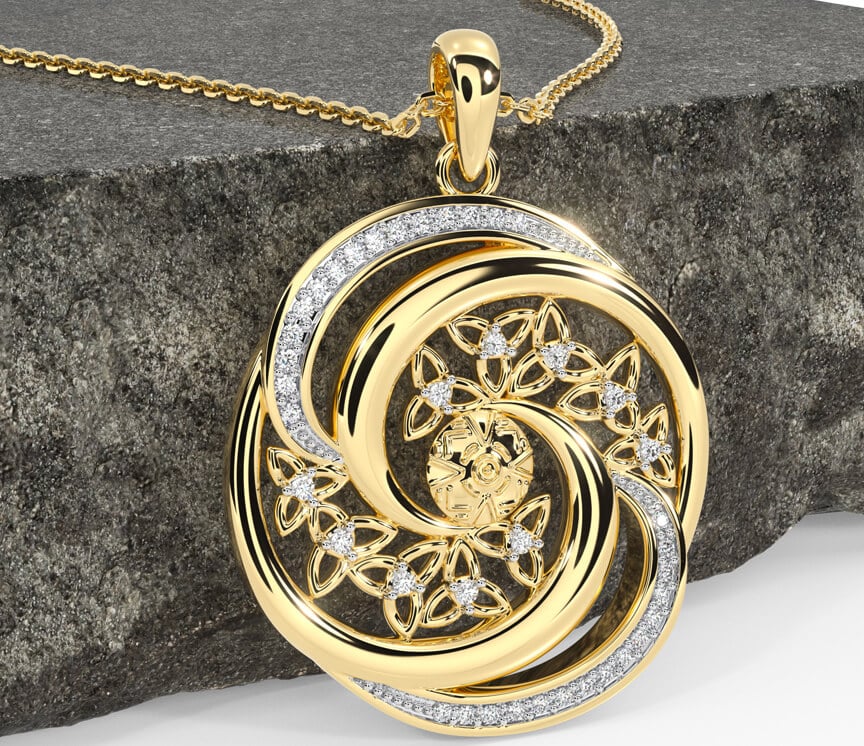
See Full Details
STONE
| Type | 10 x Round Synthetic Diamonds, 30 x Round Synthetic Diamonds |
| Quality Grade |
Synthetic |
| Size | 1.1 mm |
| Weight | N/A |
SETTING
| Height (excl bail) | 26 mm |
| Width | 25 mm |
| Metal |
Chain
| 18″ Yellow gold Coated Silver Curb – 1mm thick |
Meaning of Design
The Celtic Warrior: design is inspired by one of the finest known works of Celtic art, thought to have been owned by a high status Celtic Warrior King, the “Ardagh Chalice” made in the 9th century AD. Celtic Warriors were known to have been the most fierce in the ancient world, conquering Rome in 390 BC under the command of the Celtic Warrior King Brennus. An tale of the Celts comes from an account about an embassy of Celts from the Adriatic that caught up with Alexander the Great in 335 B.C. Apparently, the great man was impressed by their fearlessness, and he asked if there was anything the Celts truly feared. They replied, “Only that the sky should fall on our heads.” The Ardagh Chalice is a two-handled silver cup, decorated with silver, gold, and enamel, assembled from 354 separate pieces. The names of the apostles are incised in a frieze around the bowl, below a girdle bearing inset gold wirework panels of animals, birds, and Celtic designs. Techniques used include hammering, engraving, Lost-wax casting, filigree applique, cloisonne and enamelling. It was found in 1868, together with four brooches, by two young boys, digging in a potato field on the south-western side of an ancient Celtic fortified dwelling know as a “rath” (ring fort), in County Limerick, Ireland. It had a golden cup within it, and four ornate brooches. Buried without the least protection as they were, the pieces must have been interred in a hurry, probably temporarily, as the warrior intended to return for them at a later time after a battle.
The Trinity Knot: Is the most well-known Celtic design, It decorated Ireland’s illuminated manuscripts such as the Book of Kells and is also found on Celtic crosses and Celtic stones throughout Ireland. It represents eternity and continuity. In Christianity it is used to represent the Holy Trinity: Father , Son and Holy Spirit. It is thought to show the continuous energy flow from life and death. The never ending knotwork can symbolise the love and never ending commitment given in the sacred blessings of the marriage vows. The three knots can represent the past, present and future of the relationship.
Celtic Designs: have been around since ancient times, created by the highly artistic Celtic peoples, Celtic designs have long been applied to create fine art. Their distinctive patterns have appeared on stone, metalwork, in jewellery and on magnificent illuminated manuscripts. This beautifully crafted piece is a fine example of the exquisite work of the celts handed down from generation to generation.







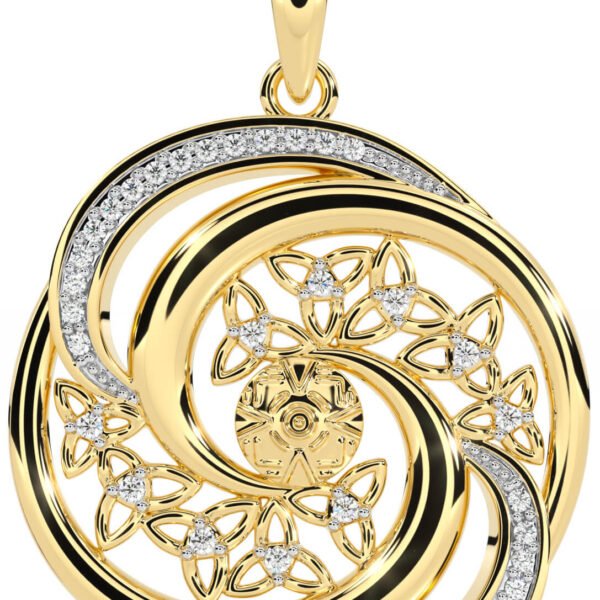

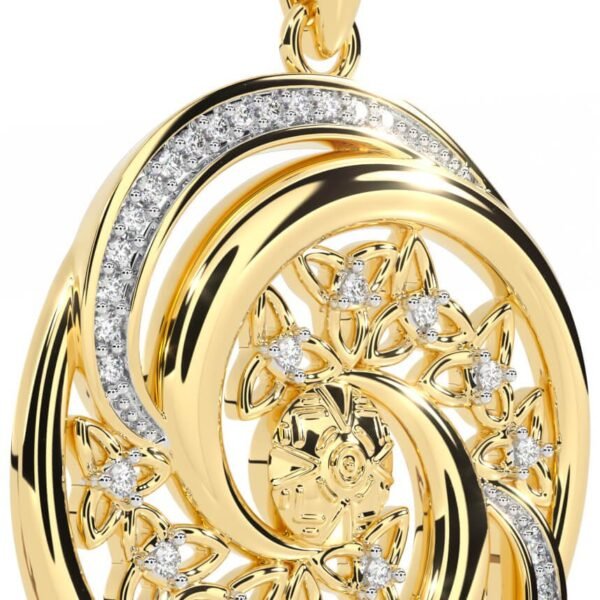




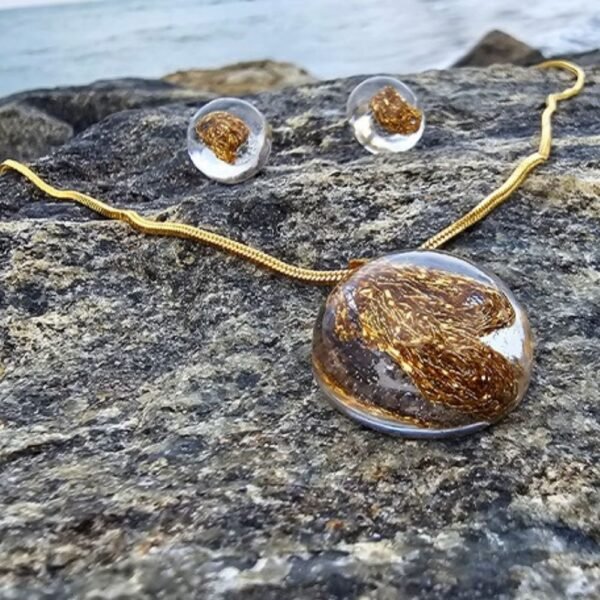
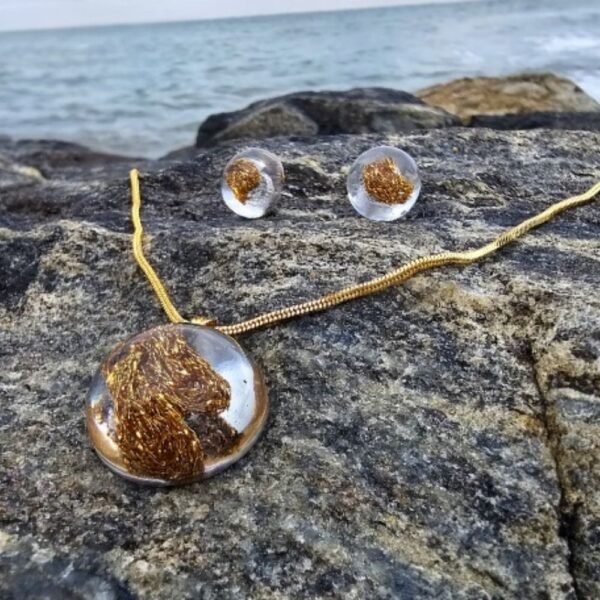


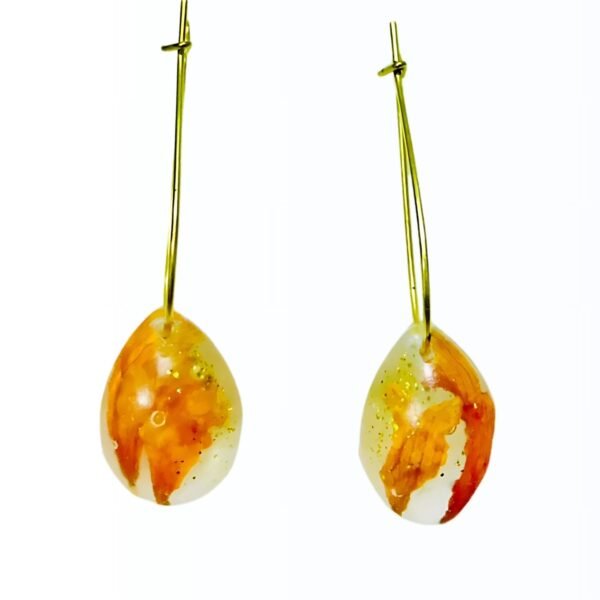
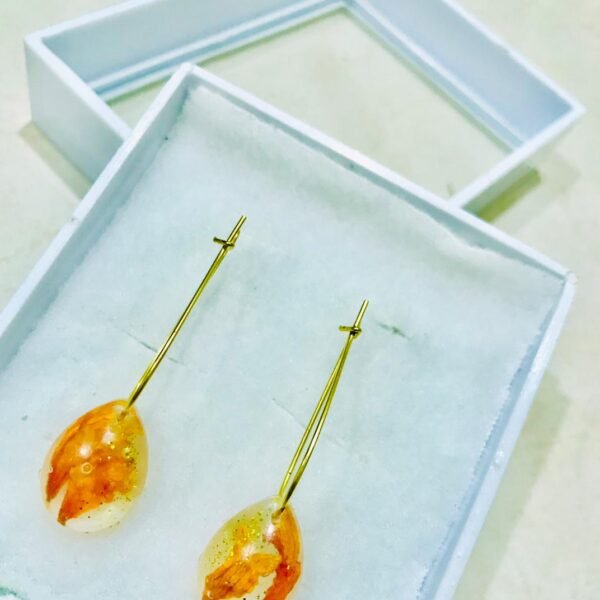





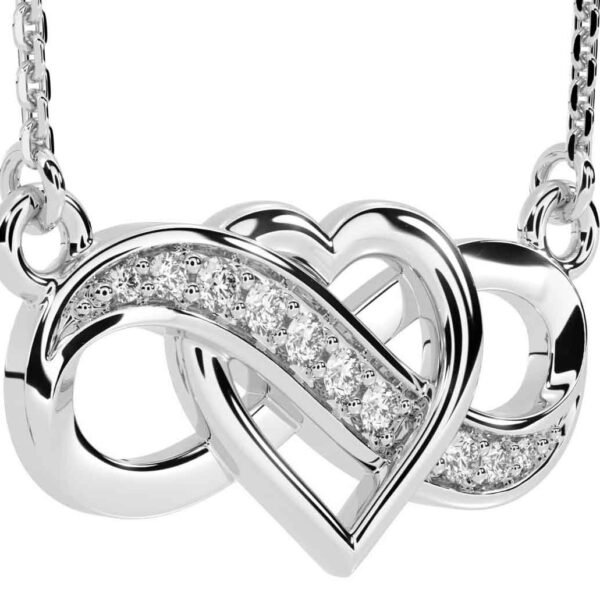









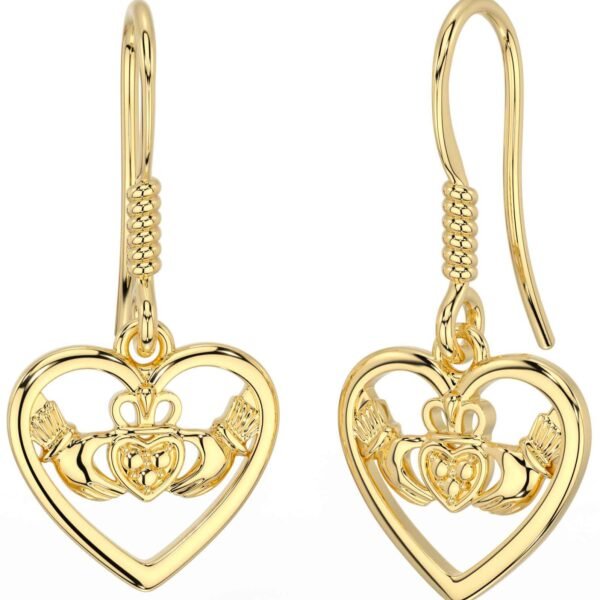







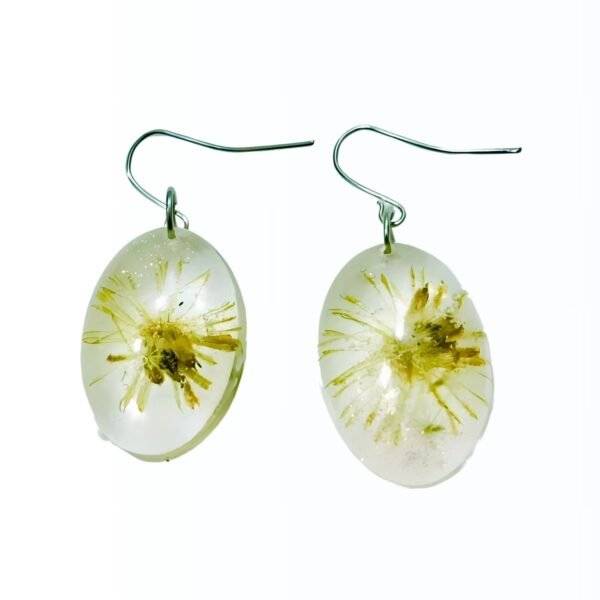



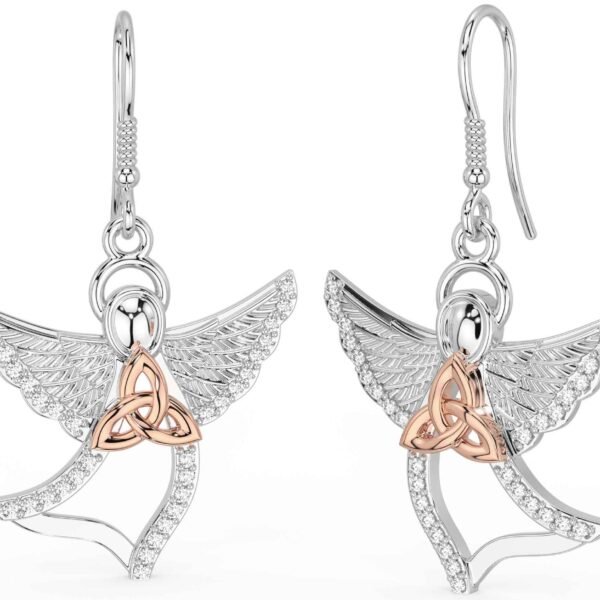
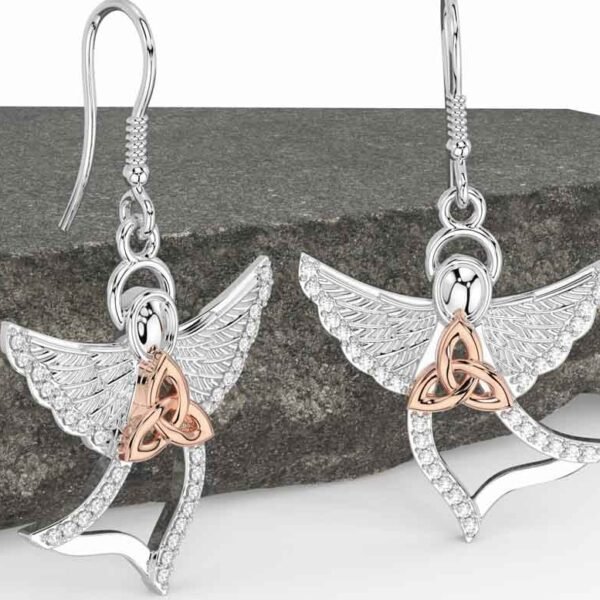



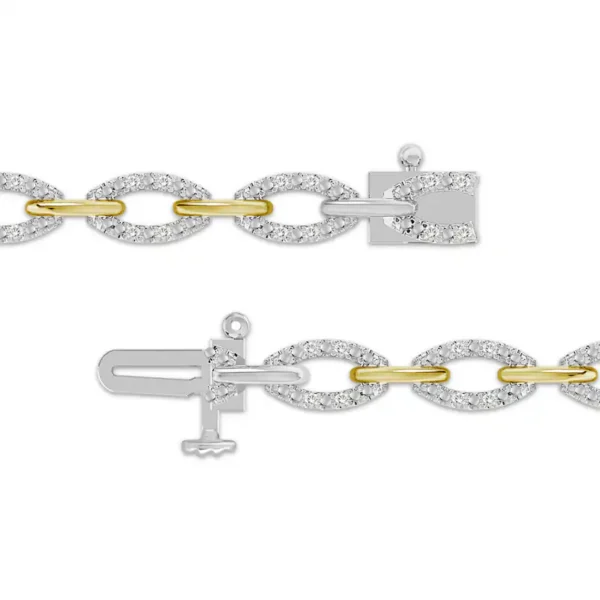






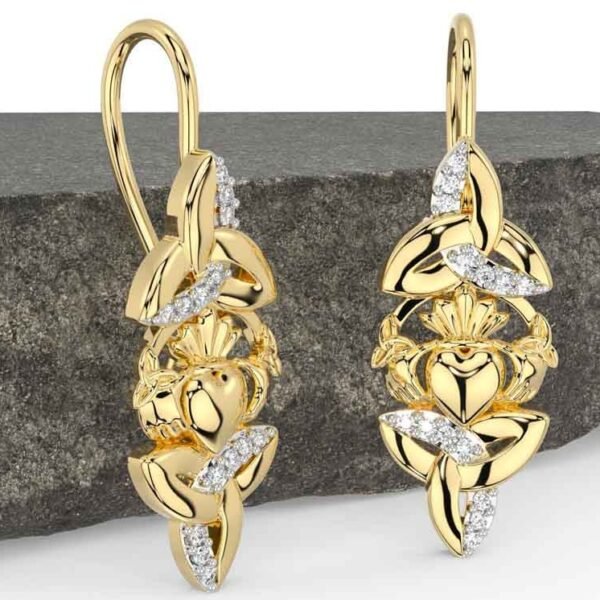



Reviews